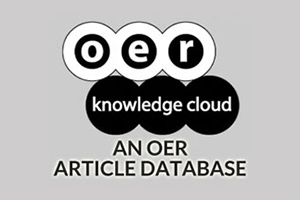The Impact of Switching Intention of Teachers’ Online Teaching in the COVID-19 Era: The Perspective of Push-Pull-Mooring
DOI:
https://doi.org/10.19173/irrodl.v26i1.7337Keywords:
COVID-19, migration behavior, online learning, push-pull mooring modelAbstract
In response to the COVID-19 pandemic, many educational institutions switched to online learning to maintain learning activities. With the global pandemic, the educational environment was forced to shift from traditional face-to-face teaching or blended learning to a fully online learning model. In February 2020, China took the lead in announcing the implementation of online learning, encouraging most teachers to use it. Exploring the potential of online learning to replace traditional face-to-face teaching is a topic deserving consideration. This study explored the factors that influenced teachers’ intention to switch to online learning during the pandemic, using a push-pull-mooring model. The study analyzed 283 valid responses gathered through an online questionnaire and found that push effects, pull effects, and habits significantly impact teachers’ intention to switch from offline to online teaching. The findings provide additional insights into the future of higher education after the pandemic.
References
Al-Mashraie, M., Chung, S. H., & Jeon, H. W. (2020). Customer switching behavior analysis in the telecommunication industry via push-pull-mooring framework: A machine learning approach. Computers & Industrial Engineering, 144, Article 106476. https://doi.org/10.1016/j.cie.2020.106476
Amabile, T. M. (1997). Motivating creativity in organizations: On doing what you love and loving what you do. California Management Review, 40(1), 39–58. https://doi.org/10.2307/41165921
Beserra, V., Nussbaum, M., Navarrete, M., & Garrido, N. (2022). Online physically active academic lessons in COVID-19 times: A pilot study. Teaching and Teacher Education, 116, Article 103750. https://doi.org/10.1016/j.tate.2022.103750
Bruggeman, B., Garone, A., Struyven, K., Pynoo, B., & Tondeur, J. (2022). Exploring university teachers’ online education during COVID-19: Tensions between enthusiasm and stress. Computers and Education Open, 3, Article 100095. https://doi.org/10.1016/j.caeo.2022.100095
Cao, Y., Zhang, S., Chan, M. C. E., & Kang, Y. (2021). Post-pandemic reflections: Lessons from Chinese mathematics teachers about online mathematics instruction. Asia Pacific Education Review, 22(2), 157–168. https://doi.org/10.1007/s12564-021-09694-w
Carrillo, C., & Flores, M. A. (2020). COVID-19 and teacher education: A literature review of online teaching and learning practices. European Journal of Teacher Education, 43(4), 466–487. https://doi.org/10.1080/02619768.2020.1821184
Chen, K., Chen, Y., Ling, Y., & Lin, J. (2020). The individual experience of online chemistry teacher education in China: Coping with COVID-19 pandemic. Journal of Chemical Education, 97(9), 3265–3270. https://doi.org/10.1021/acs.jchemed.0c00581
Chen, Y. H., & Keng, C. J. (2019). Utilizing the Push-Pull-Mooring-Habit framework to explore users’ intention to switch from offline to online real-person English learning platform. Internet Research, 29(1), 167–193. https://doi.org/10.1108/IntR-09-2017-0343
Cheng, S., Lee, S. J., & Choi, B. (2019). An empirical investigation of users’ voluntary switching intention for mobile personal cloud storage services based on the push-pull-mooring framework. Computers in Human Behavior, 92, 198–215. https://doi.org/10.1016/j.chb.2018.10.035
Çınar, M., Ekici, M., & Demir, Ö. (2021). A snapshot of the readiness for e-learning among in-service teachers prior to the pandemic-related transition to e-learning in Turkey. Teaching and Teacher Education, 107, Article 103478. https://doi.org/10.1016/j.tate.2021.103478
Culp-Roche, A., Hardin-Fanning, F., Tartavoulle, T., Hampton, D., Hensley, A., Wilson, J. L., & Wiggins, A. T. (2021). Perception of online teacher self-efficacy: A multi-state study of nursing faculty pivoting courses during COVID 19. Nurse Education Today, 106, Article 105064. https://doi.org/10.1016/j.nedt.2021.105064
Daumiller, M., Rinas, R., Hein, J., Janke, S., Dickhäuser, O., & Dresel, M. (2021). Shifting from face-to-face to online teaching during COVID-19: The role of university faculty achievement goals for attitudes towards this sudden change, and their relevance for burnout/engagement and student evaluations of teaching quality. Computers in Human Behavior, 118, Article 106677. https://doi.org/10.1016/j.chb.2020.106677
Fu, S., Li, H., & Liu, Y. (2021). Why discontinue Facebook usage? An empirical investigation based on a push-pull-mooring framework. Industrial Management and Data Systems, 121(11), 2318–2337. https://doi.org/10.1108/IMDS-12-2020-0709
Fulmer, S. M., & Frijters, J. C. (2011). Motivation during an excessively challenging reading task: The buffering role of relative topic interest. The Journal of Experimental Education, 79(2), 185–208. https://doi.org/10.1080/00220973.2010.481503
Goodhue, D. L., & Thompson, R. L. (1995). Task-technology fit and individual performance. MIS Quarterly, 19(2), 213–236. https://doi.org/10.2307/249689
Hair, J. F., Risher, J. J., Sarstedt, M., & Ringle, C. M. (2019). When to use and how to report the results of PLS-SEM. European Business Review, 31(1), 2–24. https://doi.org/10.1108/EBR-11-2018-0203
Hair, J., Hollingsworth, C. L., Randolph, A. B., & Chong, A. Y. L. (2017). An updated and expanded assessment of PLS-SEM in information systems research. Industrial Management and Data Systems, 117(3), 442–458. https://doi.org/10.1108/IMDS-04-2016-0130
Handarkho, Y. D., & Harjoseputro, Y. (2020). Intention to adopt mobile payment in physical stores: Individual switching behavior perspective based on Push-Pull-Mooring (PPM) theory. Journal of Enterprise Information Management, 33(2), 285–308. https://doi.org/10.1108/JEIM-06-2019-0179
Hou, A. C. Y., & Shiau, W. L. (2019). Understanding Facebook to Instagram migration: A push-pull migration model perspective. Information Technology & People, 33(1), 272–295. https://doi.org/10.1108/ITP-06-2017-0198
Huang, L. C., & Shiau, W. L. (2017). Factors affecting creativity in information system development: Insights from a decomposition and PLS-MGA. Industrial Management and Data Systems, 117(3), 496–520. https://doi.org/10.1108/IMDS-08-2015-0335
Ismayilova, K., & Klassen, R. M. (2019). Research and teaching self-efficacy of university faculty: Relations with job satisfaction. International Journal of Educational Research, 98, 55–66. https://doi.org/10.1016/j.ijer.2019.08.012
Lee, E. S. (1966). A theory of migration. Demography, 3(1), 47–57. https://doi.org/10.2307/2060063
Li, C. Y. (2018). Consumer behavior in switching between membership cards and mobile applications: The case of Starbucks. Computers in Human Behavior, 84, 171–184. https://doi.org/10.1016/j.chb.2017.12.042
Li, C. Y., & Ku, Y. C. (2018). The power of a thumbs-up: Will e-commerce switch to social commerce? Information and Management, 55(3), 340–357. https://doi.org/10.1016/j.im.2017.09.001
Liao, Y. W., Huang, Y. M., Huang, S. H., Chen, H. C., & Wei, C. W. (2019). Exploring the switching intention of learners on social network-based learning platforms: A perspective of the push-pull-mooring model. Eurasia Journal of Mathematics, Science and Technology Education, 15(9), em1747. https://doi.org/10.29333/ejmste/108483
Lin, C. L., Jin, Y. Q., Zhao, Q., Yu, S. W., & Su, Y. S. (2021). Factors influence students’ switching behavior to online learning under COVID-19 pandemic: A push-pull-mooring model perspective. The Asia-Pacific Education Researcher, 30, 229–245. https://doi.org/10.1007/s40299-021-00570-0
Liu, H., Yan, C., & Fu, J. (2022). Exploring livestream English teaching anxiety in the Chinese context: An ecological perspective. Teaching and Teacher Education, 111, Article 103620. https://doi.org/10.1016/j.tate.2021.103620
Liu, Y., Yue, C., & Zheng, L. (2020). Influence of online sexual activity (OSA) perceptions on OSA experiences among individuals in committed relationships: Perceived risk and perceived infidelity. Sexual and Relationship Therapy, 35(2), 162–177. https://doi.org/10.1080/14681994.2019.1636957
MacIntyre, P. D., Gregersen, T., & Mercer, S. (2020). Language teachers’ coping strategies during the COVID-19 conversion to online teaching: Correlations with stress, well-being and negative emotions. System, 94, Article 102352. https://doi.org/10.1016/j.system.2020.102352
Mokkink, L. B., Terwee, C. B., Patrick, D. L., Alonso, J., Stratford, P. W., Knol, D. L, & De Vet, H. C. (2010). The COSMIN checklist for assessing the methodological quality of studies on measurement properties of health status measurement instruments: An international Delphi study. Quality of Life Research, 19(4), 539–549. https://doi.org/10.1007/s11136-010-9606-8
Moon, B. (1995). Paradigms in migration research: Exploring ‘moorings’ as a schema. Progress in Human Geography, 19(4), 504–524. https://doi.org/10.1177/030913259501900404
Moorhouse, B. L., & Wong, K. M. (2022). The COVID-19 pandemic as a catalyst for teacher pedagogical and technological innovation and development: Teachers’ perspectives. Asia Pacific Journal of Education, 42(1), 105–120. https://doi.org/10.1080/02188791.2021.1988511
Mourlam, D. J., DeCino, D. A., Newland, L. A., & Strouse, G. A. (2020). “It’s fun!” Using students’ voices to understand the impact of school digital technology integration on their well-being. Computers & Education, 159, Article 104003. https://doi.org/10.1016/j.compedu.2020.104003
Nagar, P. M., & Talwar, V. (2023). The role of teacher support in increasing youths’ intentions to disclose cyberbullying experiences to teachers. Computers & Education, 207, Article 104922. https://doi.org/10.1016/j.compedu.2023.104922
Nayak, B., Bhattacharyya, S. S., Goswami, S., & Thakre, S. (2022). Adoption of online education channel during the COVID-19 pandemic and associated economic lockdown: An empirical study from push-pull-mooring framework. Journal of Computers in Education, 9(1), 1–23. https://doi.org/10.1007/s40692-021-00193-w
Petter, S., Straub, D., & Rai, A. (2007). Specifying formative constructs in information systems research. MIS Quarterly, 31(4), 623–656. https://doi.org/10.2307/25148814
Polites, G. L., & Karahanna, E. (2012). Shackled to the status quo: The inhibiting effects of incumbent system habit, switching costs, and inertia on new system acceptance. MIS Quarterly, 36(1), 21–42. https://doi.org/10.2307/41410404
Pressley, T., & Ha, C. (2021). Teaching during a pandemic: United States teachers’ self-efficacy during COVID-19. Teaching and Teacher Education, 106, Article 103465. https://doi.org/10.1016/j.tate.2021.103465
Shiau, W. L., Sarstedt, M., & Hair, J. F. (2019). Internet research using partial least squares structural equation modeling (PLS-SEM). Internet Research, 29(3), 398–406. https://doi.org/10.1108/IntR-10-2018-0447
Stang-Rabrig, J., Brüggemann, T., Lorenz, R., & McElvany, N. (2022). Teachers’ occupational well-being during the COVID-19 pandemic: The role of resources and demands. Teaching and Teacher Education, 117, Article 103803. https://doi.org/10.1016/j.tate.2022.103803
Straub, D., Boudreau, M. C., & Gefen, D. (2004). Validation guidelines for IS positivist research. Communications of the Association for Information Systems, 13(1), 24. https://doi.org/10.17705/1CAIS.01324
Tang, Z., & Chen, L. (2020). An empirical study of brand microblog users’ unfollowing motivations: The perspective of push-pull-mooring model. International Journal of Information Management, 52, Article 102066. https://doi.org/10.1016/j.ijinfomgt.2020.102066
Tschannen-Moran, M., & Hoy, A. W. (2001). Teacher efficacy: Capturing an elusive construct. Teaching and Teacher Education, 17(7), 783–805. https://doi.org/10.1016/S0742-051X(01)00036-1
Turk, M., Heddy, B. C., & Danielson, R. W. (2022). Teaching and social presences supporting basic needs satisfaction in online learning environments: How can presences and basic needs happily meet online? Computers & Education, 180, Article 104432. https://doi.org/10.1016/j.compedu.2022.104432
Wang, L., Luo, X. R., Yang, X., & Qiao, Z. (2019). Easy come or easy go? Empirical evidence on switching behaviors in mobile payment applications. Information & Management, 56(7), Article 103150. https://doi.org/10.1016/j.im.2019.02.005
Wong, K. Y., Sulaiman, T., Ibrahim, A., Mohd, A. G. K., Hassan, O., & Jaafar, W. M. W. (2021). Secondary school teachers’ psychological status and competencies in e-teaching during COVID-19. Heliyon, 7(11), Article e08238. https://doi.org/10.1016/j.heliyon.2021.e08238
Wu, B., & Chen, X. (2017). Continuance intention to use MOOCs: Integrating the technology acceptance model (TAM) and task technology fit (TTF) model. Computers in Human Behavior, 67, 221–232. https://doi.org/10.1016/j.chb.2016.10.028
Xu, F., Tian, M., Xu, G., Ayala, B. R., & Shen, W. (2017). Understanding Chinese users’ switching behaviour of cloud storage services. The Electronic Library, 35(2), 214–232. https://doi.org/10.1108/EL-04-2016-0080
Xu, Y. C., Yang, Y., Cheng, Z., & Lim, J. (2014). Retaining and attracting users in social networking services: An empirical investigation of cyber migration. The Journal of Strategic Information Systems, 23(3), 239–253. https://doi.org/10.1016/j.jsis.2014.03.002
Zhang, W., Wang, Y., Yang, L., & Wang, C. (2020). Suspending classes without stopping learning: China’s education emergency management policy in the COVID-19 outbreak. Journal of Risk and Financial Management, 13(3), 55–60. https://doi.org/10.3390/jrfm13030055
Published
How to Cite
Issue
Section
License

This work is licensed under a Creative Commons Attribution 4.0 International License.
This work is licensed under a Creative Commons Attribution 4.0 International License. The copyright for all content published in IRRODL remains with the authors.
This copyright agreement and usage license ensure that the article is distributed as widely as possible and can be included in any scientific or scholarly archive.
You are free to
- Share — copy and redistribute the material in any medium or format
- Adapt — remix, transform, and build upon the material for any purpose, even commercially.
The licensor cannot revoke these freedoms as long as you follow the license terms below:
- Attribution — You must give appropriate credit, provide a link to the license, and indicate if changes were made. You may do so in any reasonable manner, but not in any way that suggests the licensor endorses you or your use.
- No additional restrictions — You may not apply legal terms or technological measures that legally restrict others from doing anything the license permits.







